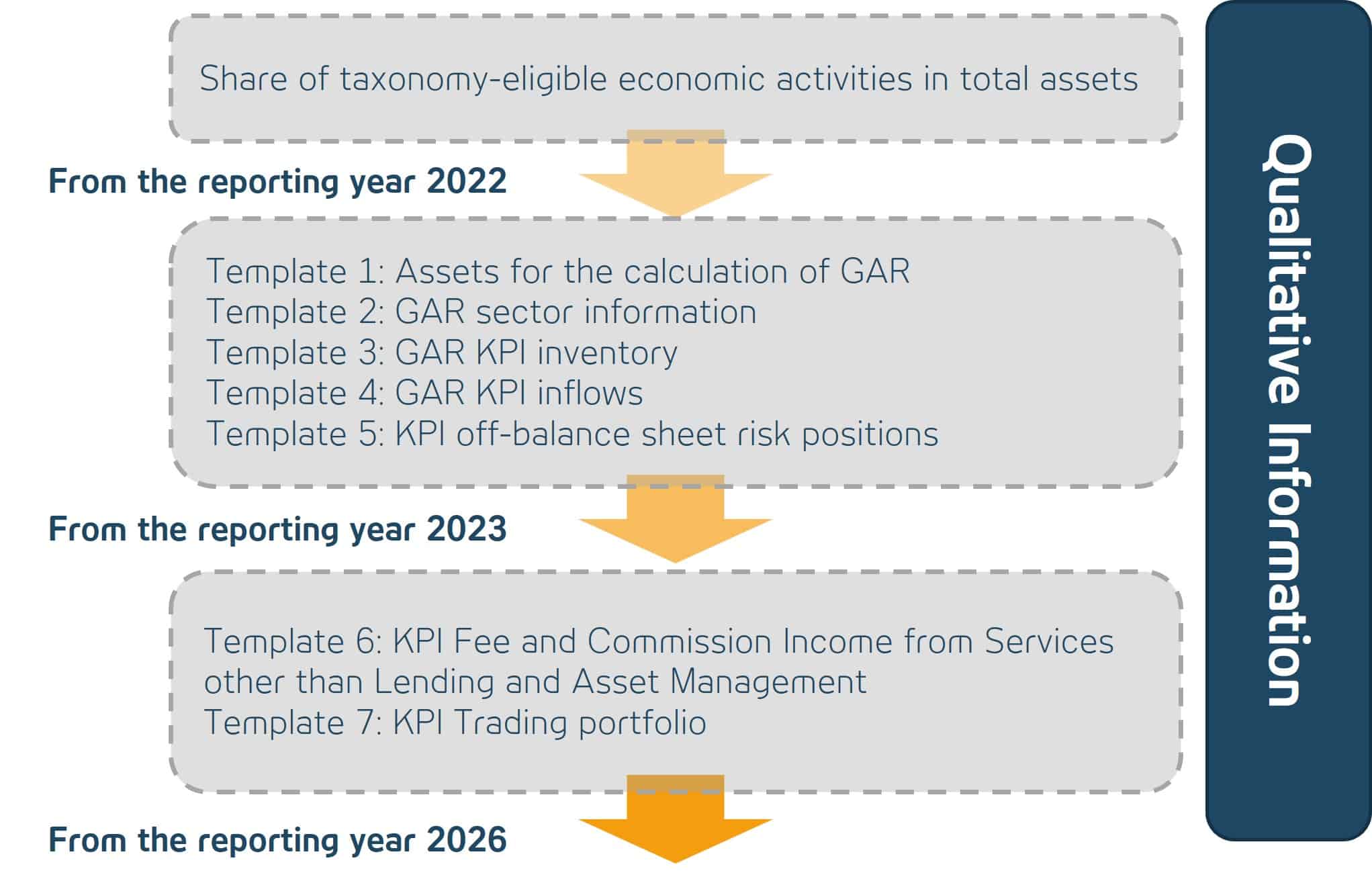ESG – Non Financial reporting Directive (NFRD)
Extended by EU/2021/2178

The NFRD disclosure requirement has already been in place for large companies since 2014 (2014/95/EU). However, with reference to the Taxonomy Regulation, this has been concretized by quantitative templates to be reported in accordance with Delegated Regulation EU/2021/2178, which are intended to provide information on the environmentally sustainable economic activities of companies. This content is instrumental in meeting future requirements under ESG-specific disclosure requirements, which we will discuss in more detail in our article below.

Laura Schulz, Junior Conusltant in Regulation & Analytics
NFRD as extended by Delegated Regulation EU/ 2021/2178
In addition to the Taxonomy Regulation, the Delegated Regulation defines assessment criteria for taxonomy-compliant economic activities, which form the basis for the subsequent determination of KPIs. In addition, disclosure requirements specifically applicable to all financial companies as well as general disclosure requirements applicable to financial and non-financial companies are defined. Here, it becomes clear that the most comprehensive information must be provided by credit institutions within the scope of seven templates, with the GAR, the Green Asset Ratio, being the most important performance indicator. Furthermore, the KPIs as well as information in the reporting forms are supplemented by corresponding qualitative information. The required information is set out in the Annex to the Delegated Regulation and has been disclosed since the Regulation came into force.
Scope of regulation
The annual disclosures required by the Delegated Regulation will come into force successively. For the reporting year 2022, financial entities were initially only required to disclose the proportion of their taxonomy-eligible economic activities in relation to their total assets in the non-financial statement.
As of the 2024 reporting year, the disclosure requirements for financial entities will increase significantly, as from then on the taxonomy compliance of economic activities must be determined using the assessment criteria in accordance with the Delegated Regulation. Templates 1-5 are relevant for credit institutions in this context, with the data from Template 1, “Assets for the calculation of GAR”, forming the basis for determining the other KPIs. These are supplemented by the sector information based on the NACE codes from template 2.
Finally, in the remaining templates, the calculation of the GAR takes place for the portfolio, the inflows of new loans related to the reporting date and the time period, and the off-balance sheet risk positions.
In accordance with Article 3 of the Taxonomy Regulation 2020/852, loans and credits, debt securities, equity instruments and repossessed collateral classified as taxonomy-compliant are taken into account in the numerator. However, risk positions referred to in Article 7 of the Delegated Regulation are excluded.
- This also means that risk positions vis-à-vis companies that are not subject to NFRD reporting requirements are not taken into account in the numerator. Due to the large number of potential positions, this may lead to significant distortions in the GAR, as their percentage share of total assets is presented in isolation or estimated within the BTAR, which is, among other things, a topic in our upcoming article on Article 449a of the CRR.
In contrast, the denominator includes all loans and advances, debt securities, equity instruments and repossessed collateral, as well as all other recognized on-balance sheet assets. The only exceptions are all risk positions vis-à-vis sovereigns, central banks and supranational issuers.
In contrast to the calculation of the GAR, which is identical under the CRR and the Delegated Regulation, the scope of disclosure differs with respect to the counterparty KPIs used. The essential point here is that the GAR-related templates of the Delegated Regulation must be duplicated, as the GAR for general loans must be calculated in each case on the basis of the disclosed revenue and CapEx KPIs of the relevant non-financial companies.
From the 2026 reporting year, in addition to the KPIs already mentioned, credit institutions must also disclose information on fee and commission income from services other than lending and asset management in template 6 and on the trading portfolio in template 7.
Address ESG issues and internal implementation status as promptly as possible and review what preparations are needed for the oversight meeting.
We at ADWEKO and Regulartech-IT-Audit-Consult are happy to support you in ESG preparation and implementation as well as in determining your implementation needs and efforts.



